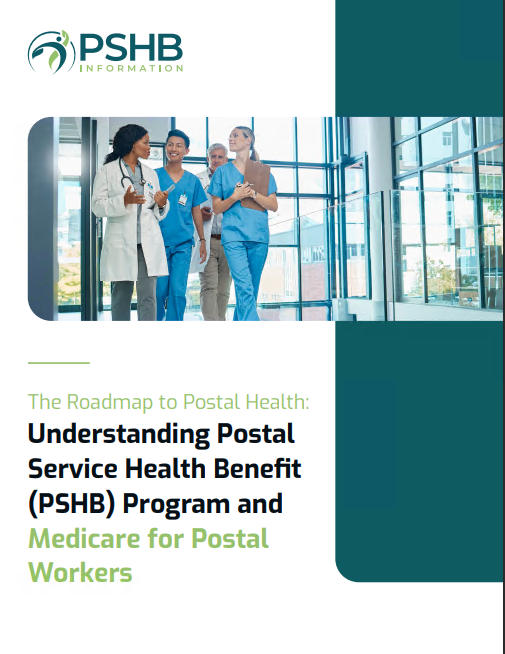Key Takeaways
-
If you miss your Medicare Part B enrollment window, you may face late penalties that increase your premium permanently.
-
Coverage gaps can leave you without medical insurance for months, potentially leading to high out-of-pocket expenses for healthcare.
Understanding the Medicare Part B Enrollment Window
Medicare Part B provides coverage for outpatient medical services, but signing up at the right time is crucial. If you’re a United States Postal Service (USPS) retiree or employee approaching retirement, you need to be aware of the specific timelines to avoid penalties and gaps in coverage.
You can enroll in Medicare Part B during:
-
Your Initial Enrollment Period (IEP): This seven-month period starts three months before your 65th birthday, includes your birth month, and extends three months after.
-
A Special Enrollment Period (SEP): If you have employer-sponsored health coverage through USPS, you may qualify for an SEP when that coverage ends, allowing you to enroll without penalties.
-
The General Enrollment Period (GEP): If you miss both your IEP and SEP, you can enroll between January 1 and March 31 each year, but coverage does not begin until July 1, leaving you uninsured for months.
What Happens If You Miss Your Enrollment Window?
1. Late Enrollment Penalties Can Be Costly
If you fail to sign up for Medicare Part B during your eligible period, a late enrollment penalty (LEP) applies. This penalty increases your monthly premium by 10% for every 12-month period you delay enrollment. The worst part? It lasts for life.
For example, if you wait three years past your IEP to enroll, your premium will be 30% higher permanently—even if you eventually sign up.
This penalty can add up over time and significantly affect your retirement budget. If you rely on a fixed income, an unnecessarily high Medicare Part B premium can strain your finances, making it harder to manage other healthcare expenses or daily living costs.
2. Coverage Gaps Can Leave You Without Insurance
Missing your enrollment window doesn’t just lead to penalties—it also means you could go months or even years without coverage. If you don’t qualify for a Special Enrollment Period, your only option is the General Enrollment Period, and since coverage doesn’t begin until July, that leaves you without Medicare benefits for months.
During this gap, you could be responsible for paying 100% of medical costs out of pocket. This can be financially devastating if you need routine doctor visits, outpatient care, or unexpected medical services.
If you develop a chronic condition or need urgent care during a coverage gap, the medical bills can quickly add up. Even a minor health issue could turn into a major financial burden without insurance to cover medical tests, prescription drugs, or specialist visits.
3. You May Lose Access to USPS-Sponsored Health Benefits
If you are a USPS retiree, delaying Medicare Part B can impact your ability to keep certain Postal Service Health Benefits (PSHB). Many PSHB plans expect Medicare to cover primary medical costs, so if you don’t enroll in Part B on time, you may have to pay significantly higher costs or lose access to specific benefits.
In some cases, USPS retirees who fail to enroll in Part B may face additional out-of-pocket expenses for hospital and doctor visits that Medicare would have covered. Your health benefits plan might still offer some coverage, but without Medicare Part B, the overall protection could be significantly reduced.
Special Enrollment Periods (SEPs) for USPS Employees and Retirees
If you’re still working for USPS past age 65 and have employer-sponsored coverage, you can delay Medicare Part B without penalties. However, you must enroll in Part B within 8 months of losing your employer coverage to avoid penalties.
You qualify for an SEP if:
-
You are actively employed by USPS and covered under their group health plan.
-
You retire and lose employer-sponsored coverage, triggering a limited window to enroll in Medicare Part B.
Missing this 8-month SEP window means you’ll need to wait for the General Enrollment Period and will likely face late penalties.
To make things even more complicated, if you retire and don’t enroll in Part B within this window, your PSHB plan may assume you have it and reduce coverage accordingly, leaving you with unexpected out-of-pocket costs.
How to Enroll in Medicare Part B if You Missed the Deadline
If you’ve missed your Initial Enrollment Period and don’t qualify for an SEP, you must enroll during the General Enrollment Period (January 1 – March 31). Here’s what you need to do:
-
Contact Social Security – You can apply online, by phone, or at your local Social Security office.
-
Check for Employer Coverage Documentation – If you had USPS-sponsored insurance, gather documents proving you had creditable coverage.
-
Prepare for Delayed Coverage – Since coverage won’t begin until July 1, plan for any medical expenses in the meantime.
In some cases, Social Security may request additional paperwork to verify your work history and employer-sponsored coverage before approving your enrollment. Having all your documents ready can help speed up the process and prevent further delays.
Strategies to Avoid Late Fees and Coverage Gaps
To ensure a smooth transition into Medicare Part B, consider these steps:
-
Mark Your Calendar: Track your Initial Enrollment Period to avoid missing the deadline.
-
Verify Employer Coverage: If you’re working past 65, confirm that your USPS health plan qualifies for an SEP.
-
Apply Early: Don’t wait until the last minute. If you’re unsure, start the enrollment process at least three months before you turn 65.
-
Review Your PSHB Benefits: Understand how your Postal Service health benefits interact with Medicare to avoid unexpected coverage reductions.
-
Seek Professional Help: If you’re confused about deadlines, talk to a licensed agent for expert guidance on enrollment timelines and your options.
By planning ahead, you can avoid the pitfalls of late enrollment, protect your healthcare coverage, and keep your retirement budget on track.
Don’t Let Medicare Enrollment Mistakes Cost You
Enrolling in Medicare Part B on time is essential to maintaining seamless healthcare coverage and avoiding unnecessary financial burdens. As a USPS retiree or employee, being proactive about your enrollment ensures that you won’t face expensive penalties or dangerous coverage gaps.
Don’t let missed deadlines disrupt your healthcare. Get in touch with a licensed agent listed on this website for professional advice.










